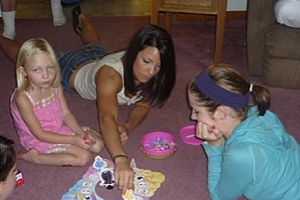 I love games—everything from Words With Friends to Fruit Ninja—and considering people play 407 million hours per month of online games, I’m not the only one. According to Nielsen, games are the second most popular online activity after social networks, ranking even higher than email.
I love games—everything from Words With Friends to Fruit Ninja—and considering people play 407 million hours per month of online games, I’m not the only one. According to Nielsen, games are the second most popular online activity after social networks, ranking even higher than email.
In addition, Gartner estimates that “by 2014, a gamified service for consumer goods marketing and customer retention will become as important as Facebook, eBay or Amazon, and more than 70 percent of Global 2000 organizations will have at least one gamified application.”
So, what does this mean for marketers that want to connect with audiences using game mechanics? Let’s take a look at the opportunities available.
What is Gamification?
Gamification is when you employ gaming techniques to non-game environments to better engage target audiences.
According to Gartner’s Brian Burke (@brian_burke) in What’s Next: The Gamification of Everything, “game mechanics have been applied to engage people, change behaviors and innovate in many different fields including innovation management, health, training, employee performance, and even social issues.”
It’s also a trend growing in popularity. As pointed out by Russell Sparkman (@fusionpark) at Content Marketing World, interest has increased steadily throughout 2011, as evidenced by Google Insights.
Global Web Search Volume for "Gamification" from Oct. 2010 to Oct. 2011

But, how does gamification fit within your marketing mix?
Gamification and Marketing—Start with a Strategy
As outlined in the Marketing Pilgrim article Using Gamification in Your Business, games can “activate communities, build trust and loyalty in a company and its products, communicate progress and level of expertise, and demonstrate status and rank.”
Therefore depending on your goals, there may be opportunities for your organization to use game mechanics such as points, progress bars, badges, leaderboards and challenges to better connect with and engage audiences. For example, Foursquare badges can be used to stimulate interaction with brands and drive purchases, sites like Lockerz reward visitors for taking specific actions, count-down clocks on private sales sites drive impulse purchases, and leaderboards are often a staple on fundraising sites to stimulate competition and acknowledge top achievers.
However, gamification is not for everyone. First, evaluate whether it makes sense within your particular industry and target market, and how it will fit within your larger marketing strategy. Understand why you are interested in gamification, and what you hope to achieve. We recommend asking yourself the following questions:
- What are your organizations' goals? For instance, are you lookng to increase customer loyalty, drive purchases or build brand awareness?
- What audiences are you trying to reach? What are their interests, and where do they interact? Are they likely to play a game?
- What acitions do you want these people to take?
- Can gamification help you reach those goals and audiences?
- How does the game tie in with your company's brand, product and/or service? For example, if you sell lawn care products, maybe your game teaches individuals how to garden.
- How will gamification fit within your larger strategy and ongoing marketing tactics?
- How will the game be built? Will the game experience take place within an existing platform, such as Facebook, Foursquare or Twitter, or will it be a truly custom-built solution?
- What will make people want to play or participate? What incentive is there for them?
- How will the game be promoted to target audiences?
- How will success be measured? What activities can you track to determine ROI?
If you choose to move forward, Adam Kleinberg (@adamkleinberg) provides a solid step-by-step implementation approach, as well as example companies using gamification successfully in Mashable’s HOW TO: Gamify Your Marketing.
Your Thoughts?
- Have you integrated gaming theory into your marketing strategy?
- If so, what results have you seen? If not, what’s holding you back?
- Where do you think gamification fits within today’s marketing mix?
Related Resources
For more on gamification, check out the following resources:
- Gamification: 4 Examples to Gamify Your Content Marketing by Joe Pulizzi (@juntajoe)
- Gamification: From Cars and Curriculum to Commerce by Kevin Carlson
- BusinessWeek’s CEO Guide to Business Gamification
- Gamification: Is Everything a Game? by Matt Rhodes (@mattrhodes)
- Gamification: Marketing’s New Shiny Object by Ginger Conlon
Image Note: Yes, that’s me playing Pretty, Pretty Princess—my favorite game of all time. What’s a better incentive than a tiara? :)
Tracy Lewis is a consultant at PR 20/20, a Cleveland-based inbound marketing agency and PR firm. Follow Tracy on Twitter @Tracy_J_Lewis.

%20Logo_BlueOrange_Trademark.png?width=800&height=269&name=Ready%20North%20(RN)%20Logo_BlueOrange_Trademark.png)




.jpg?width=300&name=Services%20Hub%203%20(3).jpg)


COMMENTS